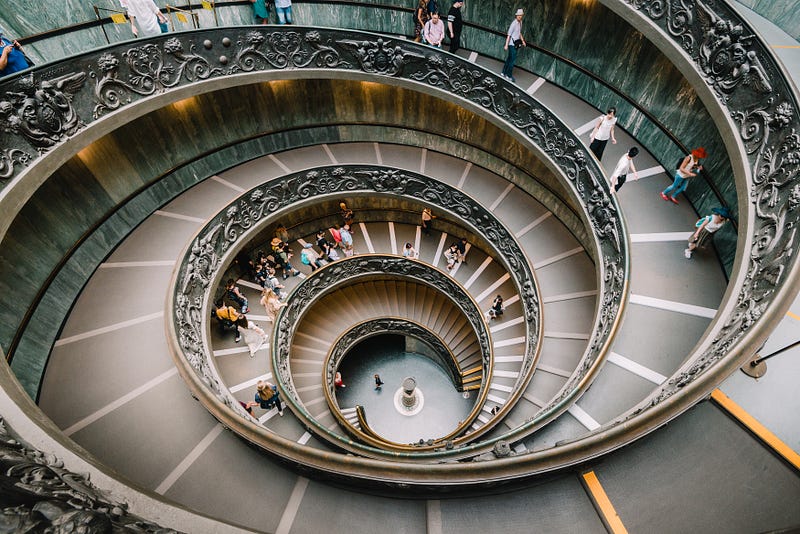Groundbreaking Advances in Physics: Slits in Time Experiment
Written on
Chapter 1: The Concept of Time Slits
Recent research has introduced the concept of 'slits in time' through revolutionary physics experiments. By employing lasers, scientists have adapted the classic double-slit experiment, traditionally associated with chance, to explore temporal dimensions instead.
This paragraph will result in an indented block of text, typically used for quoting other text.
Section 1.1: The Evolution of a Classic Experiment
Historically, scientists have demonstrated the ability to transmit light through temporal 'slits.' This latest experiment modifies a 220-year-old classic where light passes through two apertures to create intricate interference patterns. In this new approach, researchers manipulate time rather than space by altering the color of ultra-short laser pulses. This groundbreaking work opens doors for advancements in analog computing, which may leverage printed data rather than digital formats, potentially allowing these systems to learn from the information.
Subsection 1.1.1: Insights into Light and Matter

As discussed in a recent article published on April 3 in Nature Physics, the researchers employed indium tin oxide (ITO), a material prevalent in smartphones. While it was previously known that ITO could transition from transparent to reflective under light exposure, this study revealed that the transformation occurs much more rapidly than anticipated—within less than 10 femtoseconds. Riccardo Sapienza from Imperial College London, the study's lead, expressed his astonishment at the speed of this reaction, which took considerable time for the team to fully understand.
Section 1.2: The Historical Context of the Double Slit Experiment
English scientist Thomas Young first illustrated the wave-like properties of light through the double-slit experiment in 1801. When light is directed through two slits, the waves interfere with one another, creating a pattern of alternating bright and dark bands known as interference patterns.
Chapter 2: Simulating Interference Over Time
In their recent study, Sapienza and his team simulated temporal interference by directing a 'pump' laser pulse onto an ITO-coated surface. This process initially allowed ITO to remain transparent, but the laser altered the material's electrons, making it reflect light like a mirror. A subsequent 'probe' laser pulse then detected this temporary optical change within mere hundreds of femtoseconds. By utilizing an additional pump laser, the setup created a scenario akin to having two time slits, mirroring the effects of light passing through the classic double slit.
This innovative experiment is encapsulated in the video titled "How Physicists Created the Double Slit Experiment In Time," which delves deeper into the methodology and implications of this research.
Section 2.1: Light Behavior Through Time Slits
As light traverses these time-based slits, it alters its trajectory and disperses. The frequency change corresponds to variations in its wavelength, which ultimately determines its color. The resulting interference pattern is depicted as integrated peaks within a spectrum, illustrating light intensity across different temporal moments. Just as spatial adjustments alter interference patterns, temporal shifts dictate frequency spacing, influencing the visibility of peaks and interference values.
The second video, "First Ever Double Slit Experiment In Time Not Just in Space," expands on the foundational principles of this experiment and its broader implications.
Section 2.2: The Future of Time Manipulation
The findings indicate that the speed of ITO’s response plays a crucial role in the interference signals observed; materials with slower reactions exhibit fewer signals. This isn't the first instance where researchers have manipulated light in time beyond spatial dimensions. For example, Google scientists have claimed that their quantum computer, Sycamore, has produced a time crystal, a new phase of matter that periodically changes over time.
Andrea Alù, a physicist at the City University of New York, who was not involved in this study but has conducted related experiments, referred to these results as another commendable demonstration of the interplay between time and space.
"The most significant part of the experiment is that it shows how we can change the permittivity (which describes how the material transmits or reflects light) of the material (ITO) very quickly, and in large amounts," said Alù in a correspondence.

Researchers aspire to harness these features to develop metamaterials—engineered substances designed to manipulate light in targeted and sophisticated ways. Historically, these metamaterials have been static, necessitating entirely new structures for different calculations. However, Sapienza highlighted that the newfound ability to reorganize these materials could greatly enhance their versatility.
"We now have something that we can reorganize, which means we can use it for many purposes," Sapienza concluded. This innovative technology may pave the way for neuromorphic computers that can emulate the human brain.